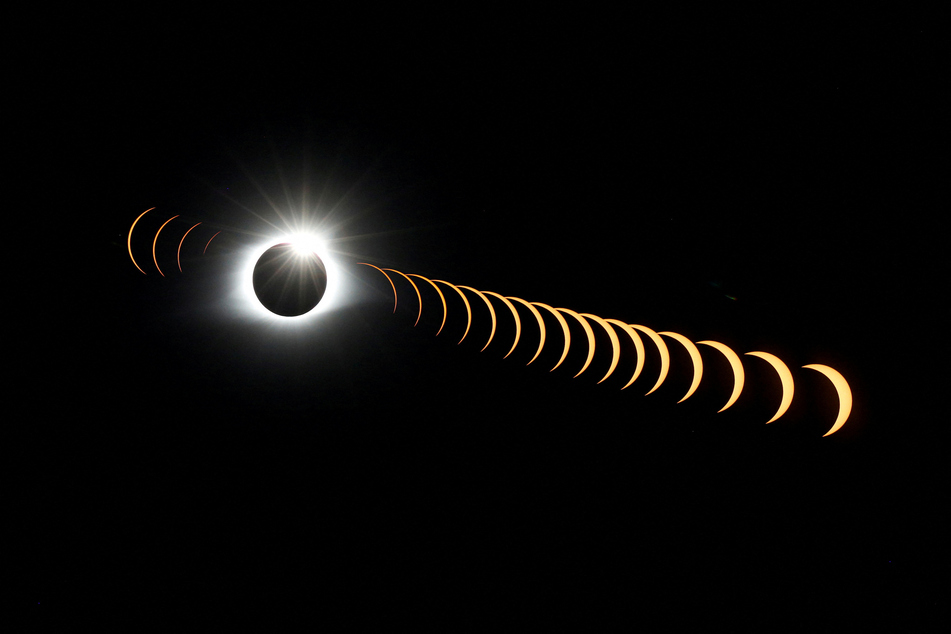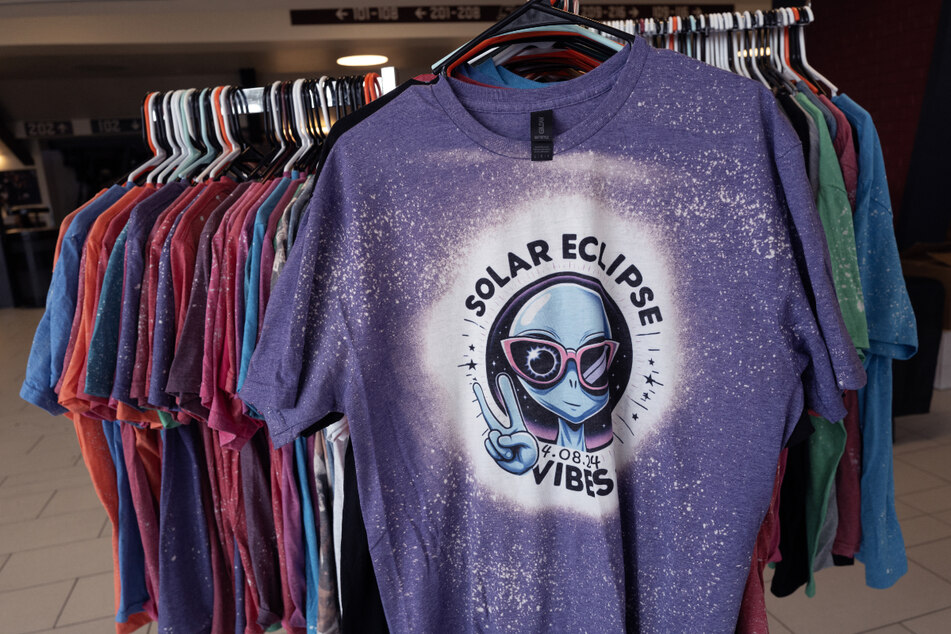Solar eclipse mania kicks in as North America gears up for big event!
New York, New York - Eclipse mania is sweeping across North America as a breathtaking celestial event on Monday promises a rare blend of commerce, science, and celebration!

The Moon's shadow will land on Mexico's Pacific coast at 2:07 PM ET, then speed northeast across a 15-state swath of the US and on to Canada, exiting the continent over Newfoundland just under an hour and a half later.
Festivals, viewing parties, and even a mass wedding are planned along the eclipse "path of totality," where the Moon will completely obscure the Sun's light for up to a few minutes – if rain clouds don't play spoilsport, which could be the case in the southern and central US.
"Eclipses have a special power," NASA administrator Bill Nelson said recently. "They move people to feel a kind of reverence for the beauty of our universe."
This year's path of totality is 115 miles wide and home to nearly 32 million Americans, with an additional 150 million living less than 200 miles from the strip. Those further away can still enjoy a partial eclipse, or follow a webcast provided by US space agency NASA.
The next total solar eclipse that can be seen from a large part of North America won't come around until 2044.
Watch parties, merch – and a mass wedding

Businesses are capitalizing on the excitement with special events, while hotels and short-term rentals in prime viewing locations have been booked solid for months.
At the Stonehenge II park in Ingram, Texas, a replica of the prehistoric structure in England, eclipse watchers had gathered from across the world.
"This is our third solar eclipse," 62-year-old Jim Saltigerald, who was attending with his wife and two children, told AFP. "We're all praying and hoping that we have a good break in the clouds and get to see it."
In Cleveland, where local officials expect some 200,000 visitors, the Rock & Roll Hall of Fame plans a four-day "Solarfest" of live music.
And in Russellville, Arkansas, 300 couples are set to exchange vows at "A Total Eclipse of the Heart" mass wedding ceremony, with the "thin circle of light around the moon resembling a huge wedding ring in the sky," the event's website boasts.
Many schools along the path will be closed or letting students out early.
Several airlines have advertised flights scheduled to pass under the eclipse, while Delta has even planned two special trips along the path of totality.
The Perryman Group, a Texas-based research firm, estimates direct and indirect economic impacts of this year's eclipse could reach $6 billion.
NASA to take unique opportunity for research

Then there's the science. NASA plans to launch a trio of sounding rockets before, during and just after the eclipse to measure changes caused by the sudden darkness to the ionosphere, an upper layer of the atmosphere important for long-distance radio communication.
The eclipse also offers a golden opportunity to study the Sun's corona, the outer layer of our star's atmosphere, which is normally hidden by the blinding light of the surface.
Researchers are particularly thrilled about the Sun being near the peak of its 11-year cycle.
Startling animal behavior has been noted during past eclipses: giraffes have been seen galloping, while roosters and crickets can start crowing and chirping.
NASA has invited the public to contribute to research through its citizen-science project Eclipse Soundscapes, by recording the sounds of nature and submitting their multisensory observations.
In humans, eclipses trigger feelings of awe and "prosocial" tendencies towards others, research has found.
But safety remains paramount, with authorities stressing people must use certified eclipse glasses to prevent retinal injury.
Only those within the path of totality can safely remove their eye protection and admire the corona peeking out from behind the silhouette of the Moon for a few precious moments.
Cover photo: REUTERS